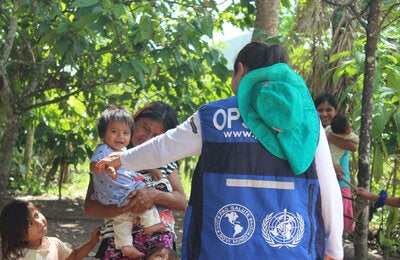
Washington D.C., November 26, 2024 (PAHO) – The Pan American Health Organization (PAHO) continues to urge countries of the Americas to maintain mpox surveillance, including laboratory detection and genomic sequencing of confirmed cases, following the detection of a Clade I variant case for the first time in the Region, in the United States of America.
In an epidemiological alert, issued by the Organization, countries are advised to remain vigilant and “to continue with their surveillance efforts, with a special emphasis on high-risk groups.”
The Clade I case was reported by the United States Centers for Disease Control and Prevention (CDC) on 16 November 2024. The individual had a history of recent travel to East Africa and was treated shortly after arrival in the United States. Health authorities are working to identify and follow-up with potential contacts. To date, no further cases of clade I have been detected in the Region.
Between January 2022 and 31 October 2024, 115,101 confirmed cases of mpox, including 255 deaths, were reported in 123 World Health Organization (WHO) Member States.
On 14 August 2024, WHO Director-General, Dr. Tedros Adhanom Ghebreyesus determined that an upsurge of mpox due to clade Ib in the Democratic Republic of Congo (DRC) and a growing number of countries in Africa constitutes a public health emergency of international concern (PHEIC).
In the Americas, the highest number of mpox cases was recorded during 2022, peaking in August 2022. This was followed by a progressive decrease in cases that has continued throughout 2023 and 2024. All cases in the Americas, except for the recent imported case of Clade Ib, were due to Clade II.
Mpox is a viral zoonotic disease caused by the mpox virus, a member of the Orthopoxvirus genus. Two different clades exist: clade I and clade II. Symptoms include fever, intense headache, muscle aches, back pain, low energy, swollen lymph nodes, and a skin rash or mucosal lesions. The rash tends to be concentrated on the face, palms of the hands, and soles of the feet, but can also be found on the mouth, anogenital region, and eyes. Symptoms typically last between 2 to 4 weeks, and go away on their own without treatment.
In the alert, PAHO reminds all Member States to continue surveillance efforts to characterize the situation and respond rapidly in the event of an introduction of Clade I mpox virus.
Efforts should focus on early detection and diagnosis, isolation and contact tracing. While vaccination can help prevent infection for people at risk, “mass vaccination against mpox in the population is neither required nor recommended.”



